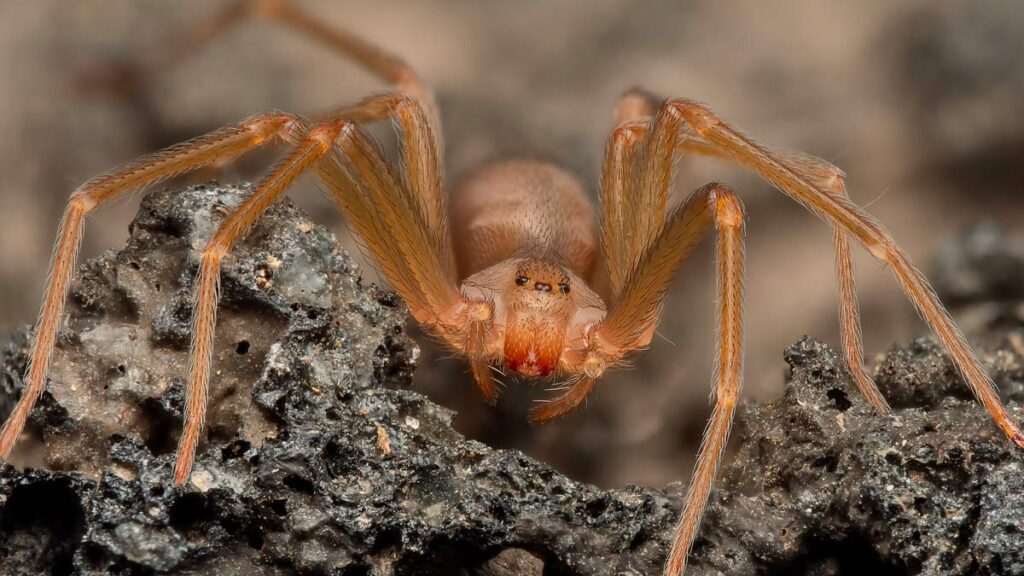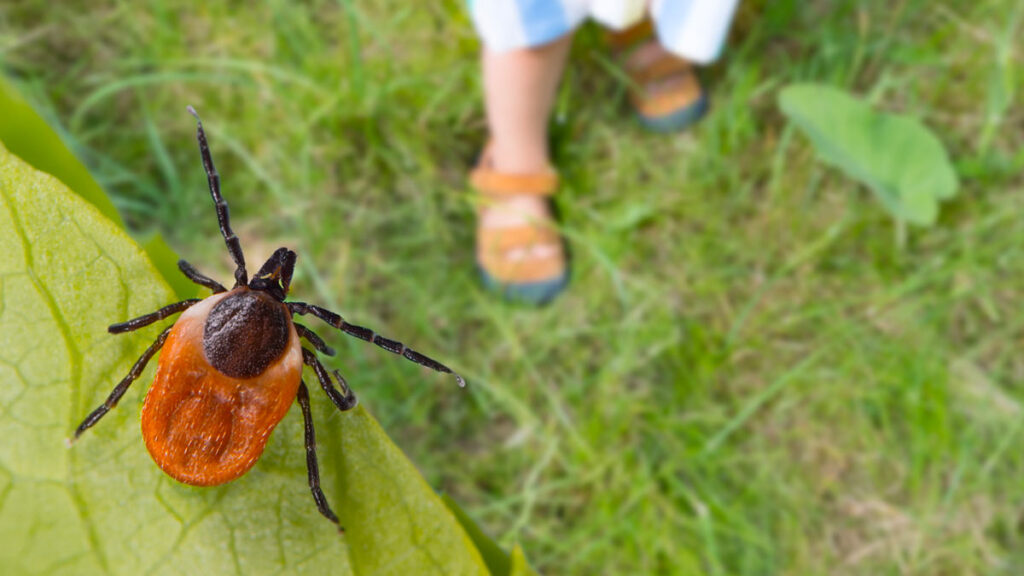
Lovebugs in Florida
Protecting Your Car from Nature’s Pesky Invaders
Updated on: January 2024

The lovebug, a small insect native to Central America, has become a notable presence in Florida over the past several decades. Often seen in pairs and noted for their black and red coloring, these bugs might appear harmless, but they can create a significant amount of damage to a motorist’s vehicle. Twice a year, during their mating seasons, they swarm in great numbers. Though their life span is short, often just a few days, the acidic nature of their remains can cause damage to a vehicle’s paint if not removed promptly. The appearance of lovebugs on highways, windshields, and grills, especially during these peak times have become a nuisance to motorists throughout Florida and strategies for both prevention and removal are needed.
Find What You Need
The Biology and Behavior of Lovebugs
Lovebugs are small, black, flying insects with a distinctive red thorax. Often mistaken for a large species of gnat, they are in fact a type of march fly. While their original habitat is Central America, these insects have gradually migrated and are now firmly established in Florida. Florida’s combination of wetlands, warm temperatures, and the presence of certain types of vegetation creates an ideal environment for these insects to thrive and is why they are so prevalent.
The most notable characteristic of lovebugs is their mating behavior, which often sees them flying in tandem, hence their name. They have two peak swarming seasons with the first in the late spring, typically around May, and the second again in late summer, around September. They become particularly prevalent during these periods and form dense clouds, especially around highways. Certain areas in Florida such as those near marshy or wetland environments tend to witness even larger congregations of these insects. Gainesville and the areas surrounding the Everglades, for example, often report particularly dense swarms.
In terms of natural control, lovebugs do have a few predators, such as various species of birds and spiders. However, their sheer numbers during peak seasons mean that these predators have a negligible impact on reducing the overall population. While there’s no commercial product that capitalizes on these predators it is important to understand that nature does have some checks in place.
The Impact of Lovebugs on Vehicles
Due to their sheer numbers, Lovebugs can cause tangible damage to vehicles. When lovebugs hit the surface of a vehicle, especially at high speeds, their bodies burst, releasing a highly acidic fluid. This fluid, if left unchecked, begins to etch into the car’s clear coat and paint. Products such as Meguiar’s G17216 Ultimate Compound have been recommended by many auto enthusiasts to remove lovebug residue without further harming the paint. However, over prolonged periods, especially under the hot Florida climate, the acidic remains can permanently tarnish a vehicle’s finish, leading to costly repaint jobs or diminishing the car’s resale value.
Along with cosmetic damage, lovebugs can also impact vehicle performance. When swarms of these insects get into the radiator or grill, they can block airflow, leading to potential overheating. In extreme cases, they can clog up the ventilation system. To prevent such issues, many Floridians opt for mesh screens, which can range from $15 to $50 depending on the brand and fit. Brands like Lund and Covercraft offer mesh screens specifically designed for certain car models. These screens can be attached to the front of the vehicle, preventing lovebugs from entering important components and ventilation systems. Regularly cleaning and checking these screens during peak lovebug seasons can further ensure smooth vehicle operation.
Take Away
The battle against Florida’s lovebugs is a recurrent challenge for vehicle owners, underscoring the importance of being equipped with both knowledge and solutions. Understanding the biology and behavior of these insects gives drivers the foresight to anticipate their swarms and take preemptive measures. Preventing lovebug splatters, from wax applications to specialized car covers, serves as the first line of defense. However, when these critters do impact your car, knowing effective removal techniques and restorative methods ensures that a vehicle remains in good condition. Lovebugs are a hallmark of Florida’s seasonal changes and being prepared and informed decreases the chances of their damaging effects.
Proactive Measures for Preventing Lovebugs from Attacking Your Car
In decreasing the damaging effects of lovebugs on your vehicle, there are a variety of preventative measures and solutions to consider ranging from store bought products to DIY services.
Protective Measures
Proactive measures can significantly mitigate the hassle and damage caused by lovebugs. One of the most common recommendations is to apply a protective layer on the car’s exterior. Regularly waxing your car with quality products like “Turtle Wax Super Hard Shell Finish” or “Meguiar’s Gold Class Carnauba Plus” not only gives your car a gleaming finish but also creates a barrier that makes it harder for lovebugs to stick. These waxes typically range from $10 to $25 per bottle, offering protection for several weeks with just one application.
Home Remedies
Beyond commercial products, certain home remedies have become common among Florida residents. A light misting of baby oil or cooking spray on the car’s front end can deter lovebugs from sticking. However, it’s essential to exercise caution as some oils might affect the car’s paint if left on for extended periods. For the vehicle’s grill and headlights, consider using nylon or mesh screens. Brands such as “Bug Screen” retail these protective covers for $20 to $40, depending on size and material. These screens act as barriers, catching the bugs before they hit the vehicle’s surface.
Primary Targets and Considerations
The windshield is a primary target for lovebugs especially during highway drives can be safeguarded with the application of products like “Rain-X Original Glass Treatment.” Priced between $5 and $15, this water repellent causes lovebugs to slide off the windshield with ease, ensuring clear vision and preventing the wipers from smearing bug remains across the glass. Taking these preventive steps can save car owners both time and money in the long run, especially during peak lovebug seasons.
Effective Solutions – Removing and Cleaning Lovebug Residue
Timely and effective cleaning is essential to prevent lasting damage upon lovebug contact with your vehicle. They can be particularly challenging to remove once the bugs are dried and firmly adhered to the car’s surface. In these cases, a bug and tar remover, such as “Turtle Wax Bug & Tar Remover” or “Chemical Guys Bug & Tar Heavy Duty Car Wash Shampoo,” can be effective. Ranging from $8 to $20, these solutions are designed to soften and lift lovebug residue without harming the vehicle’s paint.
It’s advisable to clean the car every couple of days, especially after highway drives during lovebug season. Prompt removal reduces the chance of the acidic contents damaging the paint. While high-pressure washes can be effective in removing lovebugs, they should be used with caution as direct, powerful jets can potentially strip off wax or sealant layers, so it’s essential to keep a reasonable distance and use a gentle spray setting. For a more hands-on approach, microfiber mitts or sponges soaked in a mixture of water and car shampoo can gently scrub away lovebugs. Brands such as “Relentless Drive” offer microfiber mitts for around $10, which are gentle on the paint and effective in removing bugs without inducing scratches.
For a deeper cleaning session, you can incorporate a clay bar treatment after washing. Products like “Mothers California Gold Clay Bar System”, which is priced at about $20 for a knit, can help pick up lovebug remains and restore the car’s finish.
Addressing Lovebug Damage With Restorative Techniques
The susceptibility of a vehicle’s paint to lovebug damage often depends on the car’s color and finish type. Lighter shades like white or silver tend to show less noticeable staining than darker hues such as black or navy. Clear-coated finishes, which are common on most modern vehicles, provide a protective layer against the elements. However, they can still be vulnerable to the acidic nature of lovebug remains, especially if the bugs aren’t removed promptly.
Time is of the essence when it comes to lovebug removal and should be removed from the car’s surface within 24 hours. The longer they remain, the harder they become to remove, and the greater the risk of the acidic contents causing paint damage. To restore the shine of a vehicle after lovebug damage, a polishing compound followed by a high-quality wax can work well. “Meguiar’s Ultimate Polish” is a popular choice for restoring a deep, glossy finish, with a bottle typically priced around $10. After polishing, a waxing session with a product like “Collinite No. 845 Insulator Wax” (around $20 per bottle) can improve the shine and offer a protective layer against future encounters.
Many auto shops recognize the impacts of lovebug season and offer specialized treatments to combat the issue. Treatments include protective sealants or ceramic coatings and can range from $50 to several hundred dollars depending on the product’s quality and the service’s duration. It’s a worthwhile investment for those seeking an extra layer of defense and to ensure that the car remains in peak condition, even in the most challenging lovebug-infested environments.
Environmental & Health Considerations
It’s important to consider the environmental implications of lovebug remedies and preventative measures. Many chemicals designed to repel or remove lovebugs contain solvents and surfactants that can end up in waterways and soil when washed off and potentially affect aquatic life and plants. For instance, certain bug and tar removers contain petroleum distillates, which are harmful if they leach into water sources. Biodegradable options, such as “Bugs N All – Professional Strength Multi-Surface Vehicle Cleaner,” priced around $25 for a 1-gallon concentrate, offer a more environmentally-friendly solution, breaking down more easily in the environment and posing less harm to aquatic life.
Regarding health, lovebugs are largely benign to humans. They don’t sting, bite, or carry diseases which makes them more of an annoyance than a health threat. While their primary concern is vehicular, they can cause mild respiratory discomfort for some people in massive swarms, especially those with allergies or asthma. It’s essential to consider this if attempting to clean a car during a significant lovebug invasion and using a mask or respirator might be advisable in such conditions. Prices for basic masks start as low as $5 for a pack, with more advanced respirators ranging from $30 to $50, brands like “3M” being a trusted choice in providing adequate protection.


